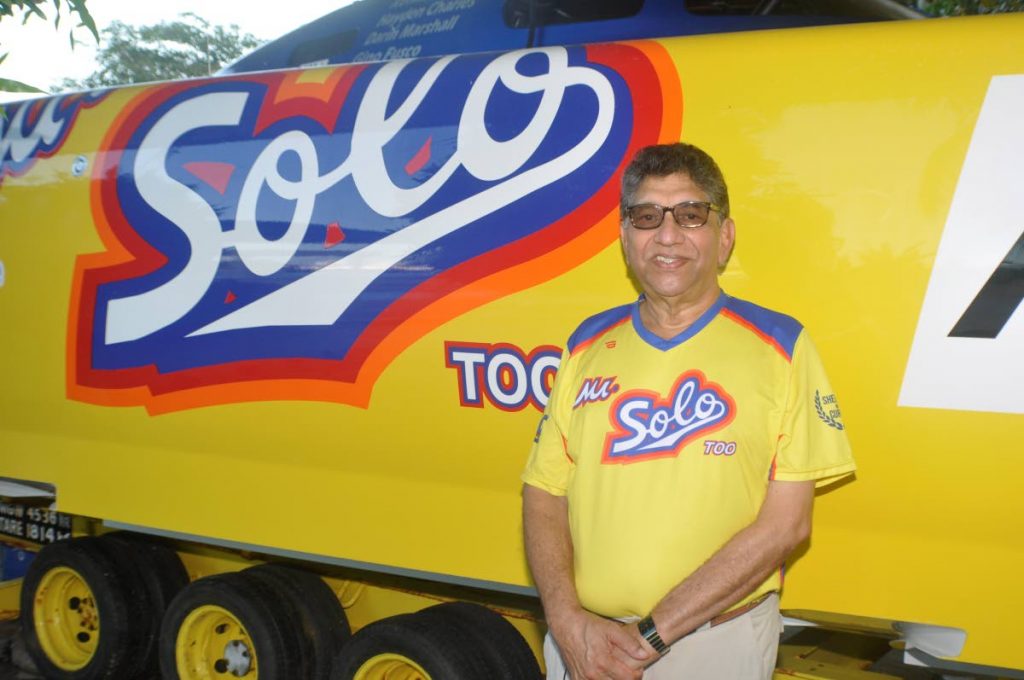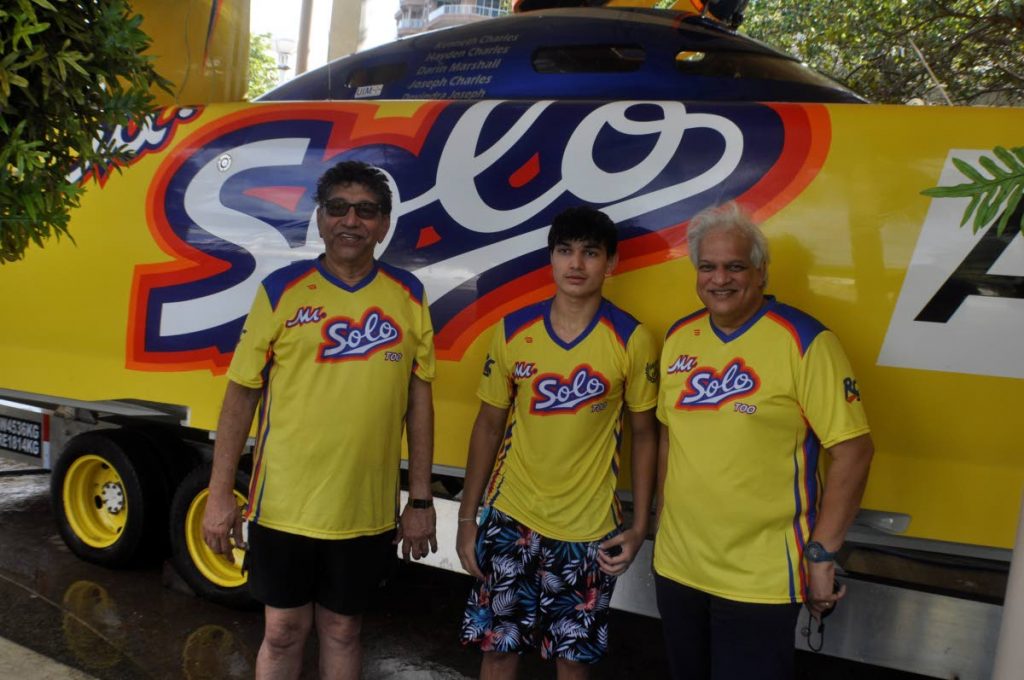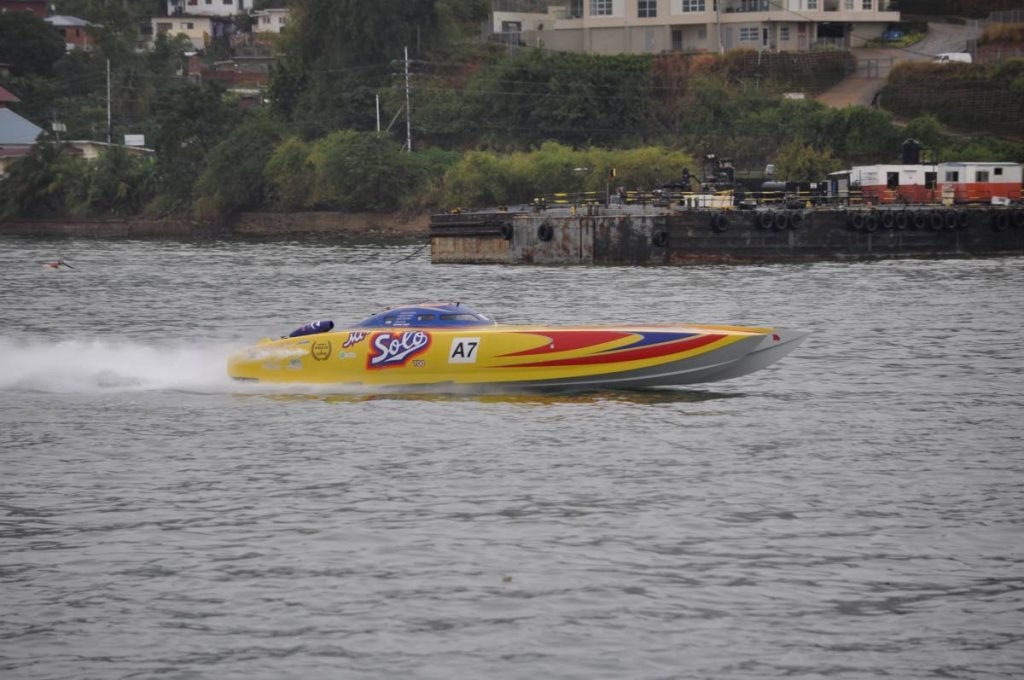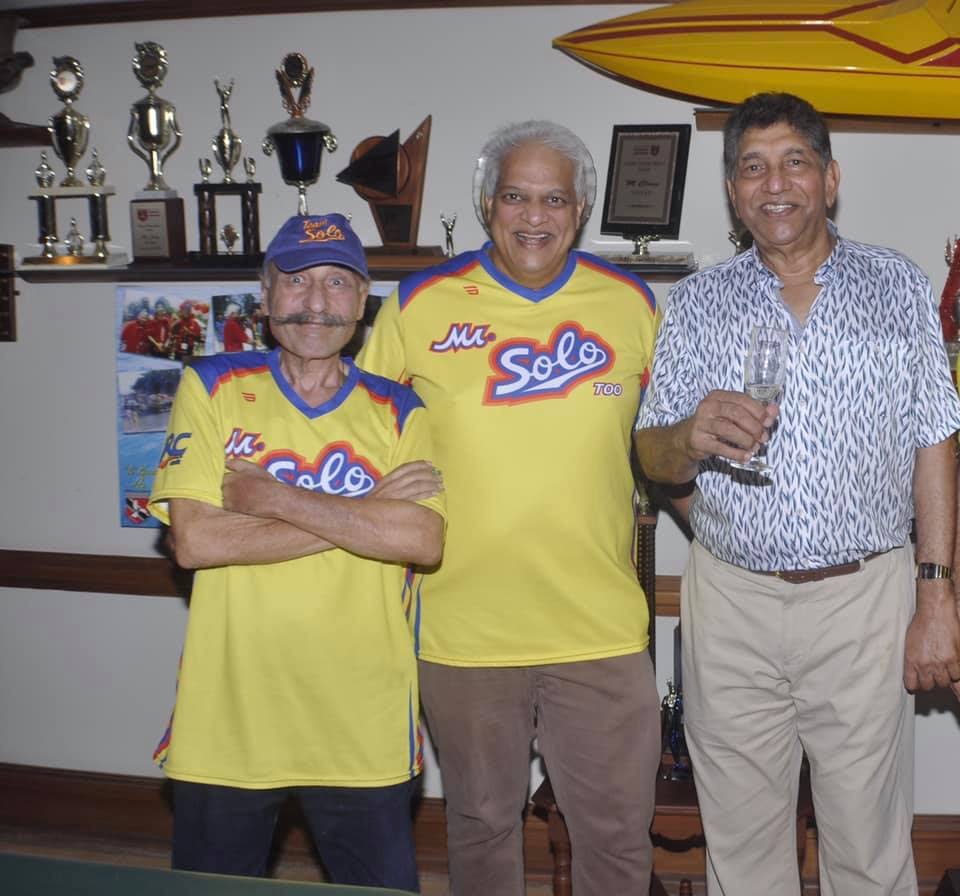Mr Solo The Legendary Ken Charles deserves to be read

READING THE biography Mr Solo The Legendary Ken Charles by Clifford Narinesingh reminds me of just what makes an interesting subject for a biography.
Being a savvy businessman and emerging at the helm of the family Solo sweet drink business isn’t enough – as tempting as it is to “sell” Charles’s story.
On the other hand, his powerboat racing success is not enough either.
The challenge Narinesingh faces is capturing the two vastly different images of Ken Charles to create an understanding of how both his occupation and his passion define him.
This is not a simple task for a biographer. Narinesingh laces Charles’s stories with declarations of how he always loved the ocean – enough to sneak out of his father Joseph’s home and defy his father’s feeling that his family shouldn’t step into anything higher than wading water.
Clearly, a biography of Ken Charles can’t just drift along with the waves. It must plunge deep into the heart of that passion to discover the “aboutness” of Charles’s penchant for powerboat racing.
Is powerboat racing the ultimate escape from the stress of the corporate world?
Charles’s involvement with the late boatbuilder Brian Bowen in building his racing boats suggests an interest in the mechanics of boatbuilding. Does powerboat racing symbolise and capture a creative side of Charles that can’t be met in the corporate boardroom?

There are many questions that can be probed and the success of this biography depends on how well Narinesingh shows those answers without telling the reader what to think.
Equally important is the material that comes before Narinesingh’s biography. A foreword by Charles’s friend, former Trinidad Express managing editor Ken Gordon, homes in on Charles’s “rare quality of making success look easy.” Gordon's foreword reveals interesting snippets of Charles, whom Gordon describes as having a “disarming personality, always easy smile, an extraordinary thoroughness and good judgment with which he has gone after what he wants.”
Gordon outlines some of the highlights of the book: the rags-to-riches story that dates back to Charles’s father, Joseph, who started the Joseph Charles Bottling works with a $350 loan from Nagib Elias, and the death of Charles’s two sons in a powerboat race.
The author’s preface was the perfect opportunity for Narinesingh to reveal his favourite anecdotes from interviews, which would show important characteristics about Charles, rather than telling readers what they should feel. I would like to see the preface rethought and refashioned in a new edition, because it is an opportunity to entice readers into the biography by giving them an indelible image that sticks with readers throughout the book.
I also envision the first chapter reworked in a subsequent revision. Currently, it is a traditional, chronological beginning. Most modern biographies start with a defining anecdote that evokes the defining theme of a subject’s life. Again, I want to see some explosion of colour and personality in the first pages. A description of Charles in an exciting race would be my first choice.
The opening paragraph of the biography itself is an opportunity to grip readers. Mr Solo begins with a description of the life of Sarjard Muckmadeen, who we don’t know is Ken Charles’s father until a few pages into the biography. This is disconcerting because readers must figure out who Muckmadeen is. The stories Narinesingh presents about Charles’s father are interesting and revealing in setting the stage for Charles’s life and personality, but they should not be the reader’s entry point.
Pictures, both black and white and coloured, are plentiful and well laid out within the copy and as mini-albums in the biography. This is commendable.
On the other hand, I prefer a traditional layout with indented paragraphs and no extra spaces between paragraphs. Using flush left paragraphs and double spaces between theme affects the flow of the story.
Learning how the Great Race came about makes exciting reading – not just because of the event, but because it makes readers think about Charles’s personality and values.

Narinesingh is exceptionally good at creating alluring chapter titles. Chapters Three-Five, Facing the Hazards at Sea, The Drama Begins and Intense Rivalry serve as edgy depictions of boat racing. These chapters are filled with tension and excitement. It would be nice to hear Charles's descriptions woven into the narrative a little more often.
By Chapter Three, readers are immersed in Charles’s races. I felt the Q&A interview taken from a People magazine article worked well in the book. It allowed Charles to go on the record to explain a race in which two men died, reminding the readers that this is a risky sport.
By Chapter 12, the style becomes more journalistic, with many quotations from newspaper reports. Narinesingh’s narration often becomes dramatic when events can speak for themselves and evoke the necessary emotions for readers to connect with the story. Some statements need to be backed up with information. Comments such as “It was generally felt that Solo’s problem was attributed to late delivery of his boat…” leave the reader wondering: who is responsible for this “general” opinion?
Tragedy Strikes is by far the most gripping chapter. Charles’s moving description of the race in which two of his sons lost their lives evokes unspeakable sadness. His determination to continue with powerboat racing afterwards is a study in determination and resilience.

In the end, Narinesingh rightfully chooses to concentrate on Charles’s powerboat racing as the vehicle to show the businessman’s life. It is there that readers best see the qualities of creativity, risk-taking and strategic planning that define Charles as a businessman.
Athough I would have preferred that Narinesingh permitted the story to tell itself more rather than embellishing it with abundant adjectives, Mr Solo The Legendary Ken Charles is an important biography that deserves to be read.
Adjustments can be made in future editions. Notes and a standard bibliography should be added to create the necessary literary credibility the biography deserves.
Constructive criticism aside, it is important to note that Narinesingh manages to condense volumes of information into a biography of an intriguing character. Any good biography satisfies our curiosity while making us hunger for more information on a subject who is worthy of being the subject of a novel.
Evocative triumphs and conflicts are present in Mr Solo. The only question that remains is whether Narinesingh plunged deep enough to create an understanding of what the sea truly represents in Charles’s life. That is for readers to decide.


Comments
"Mr Solo The Legendary Ken Charles deserves to be read"